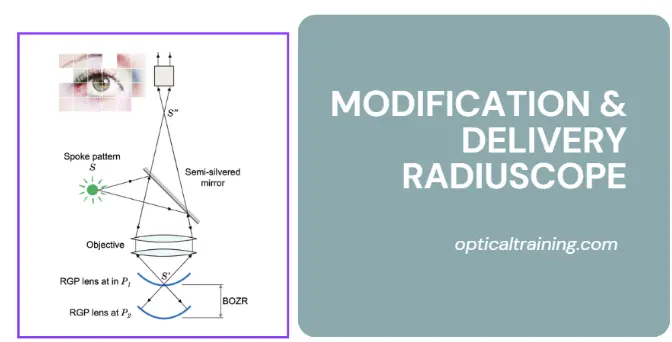
What is a radioscope and what are its key features

In the realm of modern astronomy, a radioscope represents one of the most significant advancements in our efforts to understand the cosmos. Unlike optical telescopes that rely solely on visible light, radioscopes enable scientists to detect and analyze cosmic radio waves emitted from a variety of celestial bodies. This capability has revolutionized our perception of the universe, revealing phenomena previously hidden from sight and uncovering complex structures like supermassive black holes.
The evolution of radioscopes has been marked by significant innovations and a continual quest for improved sensitivity and bandwidth. Their historical context reflects a journey of discovery, highlighting key players and pivotal moments that have shaped radio astronomy. As we delve into the features and functionalities of radioscopes, it becomes evident how they serve as essential tools in modern astrophysics.
- The Historical Context of Radioscopes
- Key Innovations in Cosmic Radio Noise Research
- Understanding the Structure of a Radioscope
- The Functionality of Radio Telescopes
- Recent Advancements in Radioscope Technology
- The Importance of Sensitivity and Bandwidth
- Applications of Radioscopes in Astronomy
- Conclusion: The Future of Radioscope Research
The Historical Context of Radioscopes
The development of the radioscope can be traced back to the early 20th century, with pioneers like Karl Jansky, who is often credited with the discovery of cosmic radio waves. In 1933, Jansky designed his own directional antenna, which ultimately detected emissions from the center of the Milky Way. This groundbreaking work laid the foundation for further research in radio astronomy.
A few years later, Grote Reber, an amateur radio engineer, took Jansky's initial findings and expanded on them in a remarkable way. Building a 9.5-meter parabolic reflector in his backyard, Reber became the first astronomer to create a radio map of the sky in 1944. His efforts demonstrated the potential of radio telescopes, showcasing their ability to capture cosmic radio noise and revolutionizing our approach to studying celestial phenomena.
Key Innovations in Cosmic Radio Noise Research
The journey toward modern radioscopes has been characterized by significant technological advancements, many of which relate to detecting and interpreting cosmic radio noise. One noteworthy innovation involved the development of large antennas capable of picking up weak signals from distant sources. These antennas could be constructed in various configurations, but the parabolic design, exemplified by Reber's work, proved particularly effective for focusing incoming radio waves onto a receiver.
As the field progressed, advancements in receiver technology, such as the introduction of highly sensitive amplifiers, allowed for greater detection of faint radio signals. Additionally, the use of computer algorithms and digital signal processing has enabled astronomers to filter out noise and enhance the clarity of the data collected. These innovations have not only improved our ability to detect cosmic signals but have also led to increased accuracy in pinpointing their sources.
Understanding the Structure of a Radioscope
A radioscope typically consists of a combination of key components that work together to capture cosmic radio signals. At the heart of the instrument lies the antenna, which acts as the primary receiver of radio waves. This antenna is designed to intercept a wide range of frequencies, allowing for diverse observations of heavenly bodies.
In most designs, the antenna feeds the collected signals to a sensitive receiver, which amplifies and processes the signals for further analysis. The structural design of the antenna itself is significant; many modern radioscopes utilize a parabolic shape to maximize signal collection efficiency. This structure enables the researchers to gather weak signals that would otherwise be overwhelmed by terrestrial radio noise.
The Functionality of Radio Telescopes
The functionality of a radioscope is a complex interplay of various technologies. Initially, the radio waves collected by the antenna are converted into electrical signals, which are then amplified via the receiver. These signals undergo further processing through advanced signal processing techniques, which help in filtering out background interference.
Another critical feature of radio telescopes is their capability to observe different frequency ranges. The wide bandwidth of these instruments allows astronomers to conduct multi-frequency surveys and gain detailed insights into the characteristics of celestial sources. This flexibility enhances the overall understanding of cosmic phenomena, from pulsars to quasars.
Recent Advancements in Radioscope Technology
Recent years have witnessed notable advancements in radioscope technology, transforming the landscape of radio astronomy. Innovations such as automated calibration systems have streamlined data collection processes, ensuring high-quality results with reduced manpower requirements. The integration of computer-aided simulations has also become a common practice, allowing engineers to optimize the structures of antennas while minimizing material use and enhancing sensitivity.
Furthermore, the development of multi-element arrays has marked a significant step forward, as these systems enable the simultaneous observation of multiple celestial sources. This technology greatly speeds up the data acquisition process while improving the imaging capabilities of radio telescopes.
The Importance of Sensitivity and Bandwidth
Critical to the performance of any radioscope is its sensitivity—a measure of its ability to detect faint radio signals. Sensitivity is inherently linked to the design of the antenna and receiver. Modern designs focus on amplifying signals while keeping noise levels to a minimum, allowing even the faintest emissions from distant stars and galaxies to be observed.
Alongside sensitivity, bandwidth is equally important in radio astronomy. It determines the range of frequencies that a radioscope can observe, integral for understanding various astrophysical processes. A wide bandwidth facilitates the detection of signals across multiple wavelengths, presenting a comprehensive view of the universe and improving our capability to link such emissions to specific phenomena.
Applications of Radioscopes in Astronomy
The applications of radioscopes extend far and wide within the field of astronomy. They have been vital in studying cosmic microwave background radiation, mapping the distribution of galaxies, and even hunting for exoplanets. One of the most profound applications is in the realm of pulsar research, where radio telescopes have discovered thousands of these rapidly spinning neutron stars, providing insight into their nature and behaviors.
Significantly, the recent imaging of a supermassive black hole in the galaxy M87, achieved by the Event Horizon Telescope, exemplifies the impact of advanced radioscape technology. By linking multiple radioscopes around the world, astronomers captured images that further our understanding of black hole mechanics and their role in galaxy formation.
Conclusion: The Future of Radioscope Research
As we look towards the future of radioscope research, it is clear that ongoing innovations will continue to enhance our capability to explore the universe. With advancements in artificial intelligence and machine learning, data analysis will become increasingly sophisticated, enabling astronomers to interpret enormous datasets more efficiently.
Looking forward, the potential of radioscopes in unveiling the mysteries of the universe remains vast. With continual improvements in technology and methodology, future radio telescopes are poised to push the boundaries of what we know about the cosmos and its intricate workings. The next lunar and Martian missions promise to expand their application, further intertwining the fields of radio astronomy and planetary science, ultimately leading us to new discoveries that were once thought to be beyond our reach.
Did you find this article helpful? What is a radioscope and what are its key features See more here Education.
Leave a Reply






Related posts